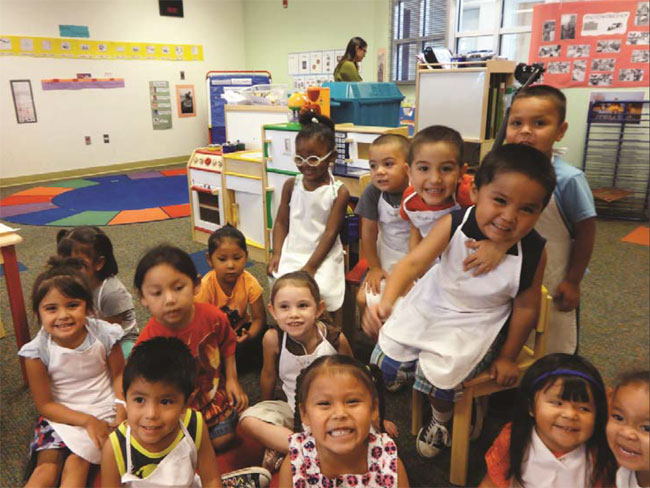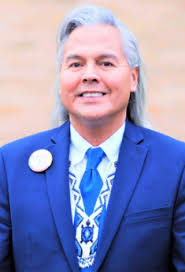
- Details
- By Aaron Payment
Guest Opinion. PART I of 3 It may surprise many to learn that education is not explicitly a direct Constitutional right for most Americans. However, it is protected as an equal protection right under the 14th Amendment—meaning that if any government provides education, it must not be denied to any American citizen. Federal Title funding and the U.S. Department of Education were established to safeguard this equal protection right and to address funding inequities when states or local districts fall short, supplementing the additional costs that districts cannot afford to offset the disadvantages some students face when they enter school.
The U.S, Department of Education does not dictate curriculum. Funding inequities originate at the state and local levels, where school finance is authorized by state legislatures and by local voters via school millages. These millages often fail because not everyone shares the same values regarding education. I hope we do not abandon the necessary protections in federal Title funding established under the 14th Amendment, Civil Rights laws, and equal rights protections.
Recall what education was like before the U.S. Department of Education was created in 1979: women and minorities were relegated to non–college-prep tracks and not to STEM educational pathways. Fifty-five years after the seminal 1969 Kennedy Report "Indian Education: A National Tragedy—A National Challenge"—and during the 50th anniversary of the Indian Self-Determination and Education Assistance Act (1975)—the dropout rate disparity between Native and white students remains nearly unchanged (NACIE 2023-24/ Broken Promises, 2018).
READ Part II Indian Education as a Constitutional Right
READ Part III Indian Education as a Constutional Right

During the 2024 presidential campaign, Russell Vought, the architect of Project 2025 and now our Office of Management and Budget Director, proposed several ideas for Indian education that, if funded, might help address the alarmingly low high school graduation rate among Native students compared to all other groups. Below are the suggestions from Project 2025 for Indian education:
- Move student-driven Impact Aid programs to the Department of Defense Education Authority (DoDEA) or the Department of Interior’s Bureau of Indian Education.
- Transfer all Indian education programs to the Bureau of Indian Education.
- Move the Tribally Controlled Postsecondary Career and Technical Education Program to the Bureau of Indian Education.
- Transfer the Vocational Rehabilitation Grants for Native American students to the Bureau of Indian Education from Office of Special Education and Rehabilitation Services
- Provide Education Choice for Populations Under the Jurisdiction of Congress including BIE.
Next, I will examine the striking parallels between the Project 2025 plan for Indian education and the President’s recent Executive Order on Indian education. Even with the potential dismantling of the U.S. Department of Education, we must continue to maintain and, ideally, expand the treaty and trust obligation to provide Indian education. Given that Native students currently have the lowest graduation rate, change is clearly needed.
Dr. Payment currently serves on his Tribal Council. He previously served 22 years in office including four terms as Tribal Chairperson. He also served for nearly a decade on the National Congress of American Indians Executive Committee including at 1 st VP twice. A high school dropout, Dr. Payment earned five college degrees including doctorate in Education (EdD). He served as a university faculty teaching Native Studies/Political Science; as School Board President of a Tribal Grant and State Charter School; and as a Tribal College Board Regent Vice-President.
Dr. Payment can be reached at [email protected]
More Stories Like This
The Absence of October's Job Report Shows Why Native American Communities Need Better DataTribal IDs Are Federally Recognized. ICE Agents Are Ignoring Them.
Thanksgiving: Part of "Broken Circle Holiday"
Thanksgiving is a Tradition. It's Also a Lie
Decisions About Us, Without Us: Education Dismantling Ignores Tribal Nations
Help us tell the stories that could save Native languages and food traditions
At a critical moment for Indian Country, Native News Online is embarking on our most ambitious reporting project yet: "Cultivating Culture," a three-year investigation into two forces shaping Native community survival—food sovereignty and language revitalization.
The devastating impact of COVID-19 accelerated the loss of Native elders and with them, irreplaceable cultural knowledge. Yet across tribal communities, innovative leaders are fighting back, reclaiming traditional food systems and breathing new life into Native languages. These aren't just cultural preservation efforts—they're powerful pathways to community health, healing, and resilience.
Our dedicated reporting team will spend three years documenting these stories through on-the-ground reporting in 18 tribal communities, producing over 200 in-depth stories, 18 podcast episodes, and multimedia content that amplifies Indigenous voices. We'll show policymakers, funders, and allies how cultural restoration directly impacts physical and mental wellness while celebrating successful models of sovereignty and self-determination.
This isn't corporate media parachuting into Indian Country for a quick story. This is sustained, relationship-based journalism by Native reporters who understand these communities. It's "Warrior Journalism"—fearless reporting that serves the 5.5 million readers who depend on us for news that mainstream media often ignores.
We need your help right now. While we've secured partial funding, we're still $450,000 short of our three-year budget. Our immediate goal is $25,000 this month to keep this critical work moving forward—funding reporter salaries, travel to remote communities, photography, and the deep reporting these stories deserve.
Every dollar directly supports Indigenous journalists telling Indigenous stories. Whether it's $5 or $50, your contribution ensures these vital narratives of resilience, innovation, and hope don't disappear into silence.
 The stakes couldn't be higher. Native languages are being lost at an alarming rate. Food insecurity plagues many tribal communities. But solutions are emerging, and these stories need to be told.
The stakes couldn't be higher. Native languages are being lost at an alarming rate. Food insecurity plagues many tribal communities. But solutions are emerging, and these stories need to be told.
Support independent Native journalism. Fund the stories that matter.
Levi Rickert (Potawatomi), Editor & Publisher
